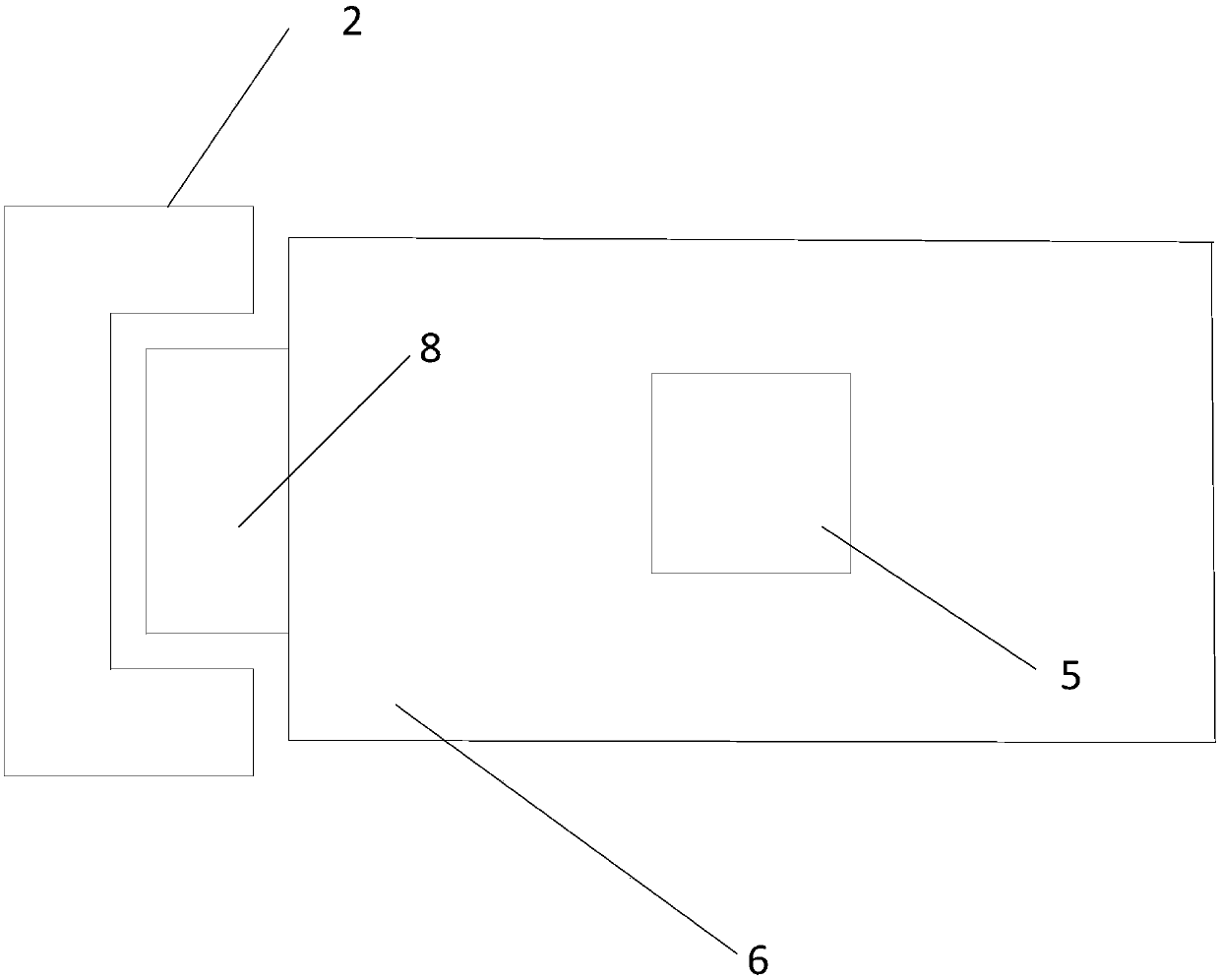Sand-plastic floor with effect of purifying indoor air
A clean room, sand-plastic technology, applied in the direction of floors, buildings, building structures, etc., can solve the problems of coating layer wear, fall off, decoration materials lose the function of removing formaldehyde, etc., to achieve the purpose of expanding the scope of use and expanding functions Effect
- Summary
- Abstract
- Description
- Claims
- Application Information
AI Technical Summary
Problems solved by technology
Method used
Image
Examples
Embodiment 1
[0049] This embodiment provides a method for preparing sand-plastic panels, including:
[0050] (1) Take by weighing quartz sand 25Kg, negative ion powder 3Kg, polypropylene resin 15Kg, polyethylene resin 25Kg, silane coupling agent KH550 5Kg, adhesive 10Kg and Tween-80 2Kg;
[0051] The adhesive is composed of epoxy resin adhesive, sodium carboxymethyl cellulose and aluminum sol; the mass ratio of epoxy resin adhesive, sodium carboxymethyl cellulose and aluminum sol is 3:2:1;
[0052] (2) Mix quartz sand, polypropylene resin, polyethylene resin, adhesive, Tween-80 and silane coupling agent KH550, and heat to 270°C under nitrogen protection to obtain the first slurry;
[0053] (3) Mix water and negative ion powder according to the mass ratio of 10:1, and at a water bath temperature of 40° C., ultrasonicate the water bath for 20 minutes to obtain negative ion excitation material slurry;
[0054] In a stirring state, adding the negative ion excitation material slurry to the fir...
Embodiment 2
[0057] This embodiment provides a method for preparing sand-plastic panels, including:
[0058] (1) Take by weighing 35Kg of quartz sand, 1Kg of negative ion powder, 20Kg of polypropylene resin, 17Kg of polyethylene resin, 2Kg of silane coupling agent KH550, 15Kg of adhesive, 3Kg of Tween-80 and 0.5Kg of pore-forming agent;
[0059] Wherein, the pore forming agent is a mixture of absolute ethanol and ethylene glycol, and the mass ratio of absolute ethanol to ethylene glycol is 5:1;
[0060] The adhesive is composed of epoxy resin adhesive, carboxymethyl cellulose sodium and aluminum sol; the mass ratio of epoxy resin adhesive, carboxymethyl cellulose sodium and aluminum sol is 5:1:3;
[0061] (2) Mix quartz sand, polypropylene resin, polyethylene resin, adhesive, Tween-80 and silane coupling agent KH550, and heat to 350°C under nitrogen protection to obtain the first slurry;
[0062] (3) Mix absolute ethanol, ethylene glycol, negative ion powder and water, and at a water bath...
Embodiment 3
[0066] This embodiment provides a method for preparing sand-plastic panels, including:
[0067] (1) Weigh 30Kg of quartz sand, 2Kg of nano tourmaline, 19Kg of polypropylene resin, 20Kg of polyethylene resin, 3Kg of silane coupling agent KH550, 2Kg of pore-forming agent, 12Kg of adhesive, 3Kg of Tween-80 and antifouling agent 3Kg;
[0068] Wherein, the pore forming agent is a mixture of absolute ethanol and ethylene glycol, and the mass ratio of absolute ethanol to ethylene glycol is 7:3;
[0069] The antifouling agent is a mixture of acetic acid and antifouling additives, and the antifouling additives are molybdenum disulfide and sorbitan fatty acid ester; the mass ratio of acetic acid and antifouling additives is 7:1; molybdenum disulfide The mass ratio with sorbitan fatty acid ester is 2:9;
[0070] The adhesive is composed of epoxy resin adhesive, carboxymethyl cellulose sodium and aluminum sol; the mass ratio of epoxy resin adhesive, carboxymethyl cellulose sodium and al...
PUM
| Property | Measurement | Unit |
|---|---|---|
| bending strength | aaaaa | aaaaa |
| impact strength | aaaaa | aaaaa |
| strength | aaaaa | aaaaa |
Abstract
Description
Claims
Application Information
 Login to View More
Login to View More - R&D
- Intellectual Property
- Life Sciences
- Materials
- Tech Scout
- Unparalleled Data Quality
- Higher Quality Content
- 60% Fewer Hallucinations
Browse by: Latest US Patents, China's latest patents, Technical Efficacy Thesaurus, Application Domain, Technology Topic, Popular Technical Reports.
© 2025 PatSnap. All rights reserved.Legal|Privacy policy|Modern Slavery Act Transparency Statement|Sitemap|About US| Contact US: help@patsnap.com



